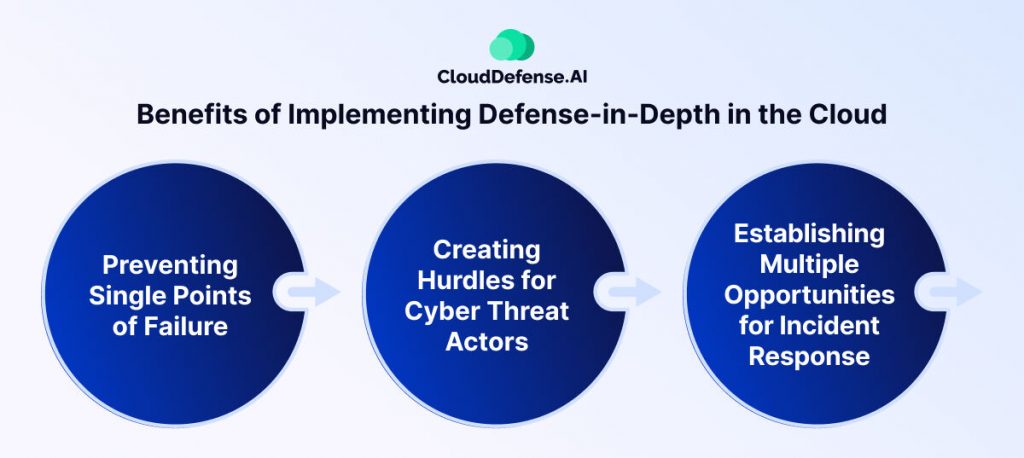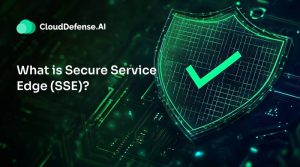What is Defense in Depth?
Defense in Depth is a layered security strategy that uses multiple measures to protect an organization’s assets. If one layer fails, others act as defenses, minimizing potential damage and enhancing security resilience.
By combining tools like firewalls, antivirus software, VPNs, and advanced technologies such as machine learning, it aims to prevent breaches or mitigate damage from ongoing attacks. This approach also addresses human errors and vulnerabilities, as negligence can often lead to security incidents.
The Different Elements of Defense-in-Depth
Defense-in-depth is all about layering multiple security measures to protect an organization’s assets. Think of it as building several fences around your property—if one gets breached, the others still hold up. Here’s a breakdown of the key elements in a solid defense-in-depth strategy:
- Human Element: Security starts with people. Training employees on best security practices, phishing prevention, and basic security hygiene can prevent a lot of attacks. Human error remains one of the top causes of breaches, so keeping your team aware and vigilant is crucial.
- Application Security: Protecting the software that runs your organization is just as important as securing your network. Tools like vulnerability scanning and application whitelisting help ensure that only trusted, safe applications can run, preventing malicious code from slipping through.
- Data Security: Your data is one of your most valuable assets, and protecting it is paramount. Encrypting data, classifying sensitive information, and setting up DLP measures are all ways to keep your data safe, whether it’s in the cloud or on-premises.
- Network Security: Strong network defenses are essential for stopping attackers from exploiting network vulnerabilities. Multi-factor authentication (MFA), secure VPN connections, and web content filtering ensure that only authorized users can access your network while blocking out malicious traffic.
- Endpoint Security: Employees’ devices are often entry points for attacks, which is why endpoint security is vital. Regular patching, endpoint detection and response (EDR), and MFA help mitigate the risk of an attack spreading from compromised devices.
- Perimeter Security: Perimeter defenses like firewalls, intrusion detection systems, and advanced security appliances stop attacks before they can infiltrate your internal network. This outermost layer helps catch threats as they attempt to breach your organization.
- Monitoring and Response: Continuous monitoring tools, such as SIEM systems, keep a close eye on your environment. These tools help detect unusual behavior and give you the ability to respond quickly to threats, minimizing potential damage.
By combining these layers, you’re building a much stronger defense against potential cyber threats. Each element supports the others, making it much harder for attackers to succeed.
Benefits of Implementing Defense-in-Depth in the Cloud

Below are the key benefits that make defense in depth a vital part of any security framework.
Minimizes the Risk of Breaches
By using multiple security layers, defense in depth reduces the chances of a successful attack. Cybercriminals are becoming more sophisticated, and relying on a single defense, like just a firewall, is no longer enough. With layered security, even if one layer fails, the others are in place to prevent a breach.
Provides Time for Countermeasures
If a breach occurs, defense in depth buys critical time for IT teams to respond. For example, if a hacker bypasses the firewall, antivirus software or endpoint protection can still block further intrusion, allowing security teams to take corrective action and prevent further damage.
Redundant Security Layers
While redundancy may seem inefficient, it ensures backup layers are available in case one defense fails. This reduces the likelihood of a single point of failure compromising the system. If one security tool falters, another is ready to stop the threat.
Complete Coverage
Defense in depth secures all potential attack vectors, including endpoints, data, and applications. By employing multiple layers across the entire infrastructure, this strategy offers robust protection against various types of cyberattacks.
Flexibility Against Evolving Threats
Defense in depth allows for adaptability while threats evolve. It enables organizations to integrate different tools to address new threats like zero-day vulnerabilities or insider attacks, maintaining effective defense across all threat types.
How to Implement Defense-in-Depth in the Cloud?
When implementing defense in depth in the cloud, security controls vary, considering the absence of physical access to cloud servers. Cloud consumers can, however, apply technical and administrative controls, categorized as exterior or interior cloud security.
Exterior Cloud Security
Understanding how you use cloud resources is important. Make sure each resource’s security matches its risk level. It’s best to keep public and internal resources separate. If that’s not possible, use clear connections. Control access to cloud systems tightly.
Only trusted connections should reach cloud-based virtual machines, either through VPNs or Zero Trust Networking. Essential security measures include robust authentication, like multi-factor authentication, and using Cloud Access Security Broker (CASB) tools for consistent Identity and Access Management controls.
Interior Cloud Security
Separating data, analytics, and services in the cloud is important. Access should be based on necessity and minimal privilege. Keep sensitive information secure by encrypting it when stored and during transfer, with keys stored internally. Employ modern security monitoring, like SIEM and EDR, in the cloud. Integrate APIs with CSP security tools for thorough coverage.
Tools and Technologies to Enhance Defense-in-Depth
To implement an effective defense-in-depth strategy, you need a comprehensive toolkit that combines both traditional and advanced security technologies. Each tool plays a distinct role in protecting your assets, from network perimeter to cloud infrastructure, ensuring that every potential vulnerability is covered.
Traditional Tools
At the foundation of any security strategy, traditional tools like firewalls, Intrusion Detection and Prevention Systems (IDPS), and antivirus software continue to be essential.
- Firewalls: These are the first line of defense in controlling network traffic. While some firewalls focus on speed (stateless), others provide more detailed inspection (stateful) or focus on web traffic (application layer). Firewalls help filter out unauthorized access, reducing the risk of attackers getting inside.
- IDPS: These systems detect and prevent potential intrusions. Signature-based IDPS identify known threats, while anomaly-based systems track unusual behavior to identify novel threats. Both types operate either on individual devices (host-based) or across entire networks (network-based), enhancing security at different levels.
- Antivirus Software: Traditional antivirus tools detect known malware and block it from running on systems. Today, cloud-based antivirus solutions are becoming more popular as they can use global threat intelligence to spot emerging threats faster.
Advanced Tools
More advanced security solutions provide deeper protection and greater visibility, especially when it comes to modern infrastructures like cloud and containers. You can also go for CNAPPs that provide all the tools mentioned below bundled in one platform.
- Static and Dynamic Application Security Testing (SAST & DAST): These tools are essential for identifying vulnerabilities in applications. SAST analyzes source code before deployment, while DAST assesses running applications for vulnerabilities in real-time. These tools are crucial in preventing security issues during the development phase and in production.
- Software Composition Analysis (SCA): With many applications relying on third-party components, SCA helps identify vulnerabilities within those external libraries and dependencies, ensuring that third-party software doesn’t introduce risks into your environment.
- Cloud Security Posture Management (CSPM): CSPM tools continuously monitor your cloud infrastructure for compliance and security gaps. They identify misconfigurations and vulnerabilities in real-time, helping maintain secure cloud environments. CSPM is essential for managing and securing resources across hybrid and multi-cloud architectures.
- Data Security Posture Management (DSPM): DSPM solutions provide visibility and control over sensitive data within cloud environments. By classifying data, ensuring encryption, and enforcing access policies, DSPM helps protect data from breaches or misuse.
Next-Generation Models
Some of the most powerful solutions today focus on integrating data across systems to provide deeper insights and faster responses.
- Managed Detection and Response (MDR): These services offer 24/7 monitoring by security experts who manage the detection and response to security incidents. With real-time visibility and support, MDR solutions improve the speed of incident handling.
- Extended Detection and Response (XDR): XDR tools provide a holistic view by connecting data across various security layers, from endpoints to cloud services. By correlating events and identifying patterns, XDR improves the accuracy and speed of threat detection, making it easier to respond to sophisticated attacks.
- Secure Access Service Edge (SASE): SASE integrates networking and security functions into a unified framework. This approach simplifies the management of remote access, secure data transfers, and threat protection for organizations adopting a cloud-first or hybrid strategy.
Automating Response with SOAR Platforms
With the growing complexity of security environments, automation has become crucial in ensuring rapid and efficient incident response. SOAR platforms automate the detection, analysis, and response to incidents, reducing the burden on security teams and speeding up resolution.
SOAR platforms provide predefined workflows that ensure incidents are handled quickly and effectively, minimizing the potential damage from security breaches. These platforms integrate with existing security systems, enabling automated responses and a seamless, coordinated security operation.
Challenges of Defending Cloud Environments
Implementing cloud security with defense in depth faces challenges due to limited customer control over the cloud. Variations in IaaS, PaaS, and SaaS complicate control expectations. In SaaS, the customer lacks access, while IaaS demands internal workload control.
Traditional security approaches don’t seamlessly translate to the cloud, and reliance on cloud providers for security raises concerns. Cloud security defies traditional perimeter-focused models, demanding diverse defense layers across environments.
This complexity necessitates careful planning to avoid inconsistent security levels across the enterprise. Organizations must adapt governance strategies, balancing reliance on internal control with trust in cloud providers while mitigating risks to acceptable levels.
Conclusion
If you want to Implement Defense-in-depth in the cloud, you must treat it as an extension of the organization’s internal network, ensuring secure connectivity and applying existing protections. Isolation and access management strategies enhance security. Continuous monitoring is essential for situational awareness and rapid threat mitigation.
Recognizing security as an ongoing effort, human oversight working hand-in-hand with technology is essential. As threats evolve, so must defense mechanisms. Defense-in-depth, a multi-layered approach, isn’t a silver bullet but provides a strong shield in the cyber threat domain, empowering businesses to secure their digital empire effectively.







